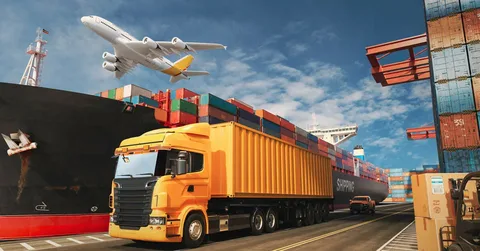
In the intricate dance of modern logistics and freight management, accuracy stands as a cornerstone. The ability to precisely determine the weight of goods transported via rail is not merely a matter of compliance; it directly impacts operational efficiency, safety, and ultimately, profitability. This is where the crucial role of the Static Rail Weighing Bridge comes into sharp focus. Unlike dynamic or in-motion weighing systems, a Static Rail Weighing Bridge demands that railcars come to a complete halt for their weight to be meticulously measured. This deliberate pause ensures a higher degree of accuracy, making it indispensable in scenarios where even minor discrepancies can have significant consequences.
The fundamental principle behind a Static Rail Weighing Bridge lies in the transfer of the railcar’s load onto a series of load cells strategically positioned beneath the weighing platform. These robust sensors, typically employing strain gauge technology, convert the applied force (weight) into an electrical signal. This signal is then amplified, processed by a sophisticated indicator, and displayed as a precise weight reading. The entire process, while seemingly straightforward, involves intricate engineering and calibration to guarantee reliability and adherence to stringent metrological standards.
1.Advantages of Static Rail Weighing Systems
The adoption of a Static Rail Weighing Bridge offers a multitude of advantages that contribute significantly to the smooth and accurate flow of rail-based commerce.
Unparalleled Accuracy
The primary advantage, and perhaps the most compelling, is the superior accuracy achieved through static weighing. By eliminating the dynamic forces and vibrations inherent in in-motion weighing, a Static Rail Weighing Bridge provides a highly precise measurement of each railcar’s weight. This accuracy is paramount for:
- Accurate Inventory Management: Knowing the precise weight of transported goods allows for meticulous inventory tracking and reduces discrepancies.
- Fair Billing and Transactions: Accurate weight data forms the basis for fair and transparent billing between shippers, carriers, and consignees.
- Regulatory Compliance: Many industries and regulatory bodies mandate precise weight measurements for safety and legal compliance.
- Safety and Load Distribution: Accurate weighing ensures that railcars are loaded within safe limits, preventing derailments and other accidents caused by overloading or uneven weight distribution.
Robustness and Longevity
Static Rail Weighing Bridges are typically designed and constructed with heavy-duty materials to withstand the immense loads and harsh environmental conditions associated with railway operations. Their robust construction translates to a longer lifespan and reduced maintenance requirements compared to more complex dynamic systems. This durability provides a significant return on investment over the long term.
Versatility in Application
While the core principle remains the same, Static Rail Weighing Bridges can be adapted to various railway configurations and operational needs. They can accommodate different rail gauges, axle loads, and train lengths. Furthermore, they can be integrated with various data management systems for seamless recording, reporting, and analysis of weighing data.
2.Introducing the Pitless Rail Static Weigh Bridge
While traditional Static Rail Weighing Bridges often require a significant civil engineering undertaking involving the construction of a pit to house the weighing mechanism, the Pitless Rail Static Weigh Bridge offers a compelling alternative. As the name suggests, a Pitless Rail Static Weigh Bridge is installed directly on the existing track foundation or a minimal concrete pad, eliminating the need for extensive excavation and pit construction.
This innovative design achieves accurate static weighing without the complexities and costs associated with pit construction. The load cells and weighing platform are typically mounted on low-profile supports or integrated into the rail structure itself, allowing railcars to be weighed directly on the surface.
3.Advantages of Pitless Rail Static Weigh Bridges
The Pitless Rail Static Weigh Bridge inherits the core benefits of static weighing – accuracy and robustness – while adding a distinct set of advantages related to its unique design:
Reduced Installation Costs and Time
The most significant advantage of a Pitless Rail Static Weigh Bridge is the substantial reduction in installation costs and time. Eliminating the need for excavation, formwork, and concrete pouring associated with pit construction translates to significant savings in both labour and materials. Moreover, the installation process is considerably faster, minimizing disruption to railway operations.
Simplified Maintenance
Without a pit, maintenance and inspection of the weighing components are significantly simplified. Access to the load cells and other critical parts is much easier, reducing downtime and maintenance costs. The absence of a pit also eliminates potential issues related to water ingress, debris accumulation, and the need for pit cleaning.
Greater Flexibility and Portability
Pitless Rail Static Weigh Bridges offer greater flexibility in terms of installation location. They can be installed in areas where excavation might be difficult or cost-prohibitive. Some Pitless Rail Static Weigh Bridge designs are even semi-portable, allowing for relocation if operational needs change. This adaptability can be a significant advantage in temporary or evolving railway environments.
Enhanced Safety
The absence of a pit eliminates the safety hazards associated with open excavations, such as the risk of falls. This creates a safer working environment for personnel involved in the installation, operation, and maintenance of the weighing system.
4.Applications of Static Rail Weighing Bridges
Both traditional and Pitless Rail Static Weigh Bridges find widespread application across various industries that rely on rail transport:
- Mining and Aggregates: Weighing raw materials like coal, ore, and gravel for inventory management and billing.
- Agriculture: Measuring the weight of grains, fertilizers, and other agricultural products.
- Chemicals and Petrochemicals: Ensuring accurate loading and unloading of hazardous and non-hazardous liquids and solids.
- Manufacturing: Weighing incoming raw materials and outgoing finished goods.
- Logistics and Transportation: Verifying the weight of freight for compliance and efficient transport planning.
- Waste Management: Weighing incoming waste for processing and landfill management.
In each of these applications, the accuracy provided by a Static Rail Weighing Bridge, whether a traditional pit-based system or a Pitless Rail Static Weigh Bridge is crucial for efficient operations, regulatory compliance, and financial accountability.
Conclusion: Choosing the Right Static Weighing Solution
The selection between a traditional Static Rail Weighing Bridge and a Pitless Rail Static Weigh Bridge depends on a variety of factors, including budget, site conditions, installation timelines, and long-term operational needs. While traditional pit-based systems offer a well-established and robust solution, the Pitless Rail Static Weigh Bridge presents a compelling alternative with its advantages in terms of cost-effectiveness, ease of installation and maintenance, and flexibility.
Ultimately, the imperative for accurate railcar weighing remains constant. Whether through a traditional or pitless design, the Static Rail Weighing Bridge plays an indispensable role in ensuring precision, safety, and efficiency in the movement of goods via rail, underpinning the smooth functioning of numerous vital industries. As technology continues to evolve, both types of static weighing systems will undoubtedly continue to adapt and provide crucial data for the railway industry for years to come.




